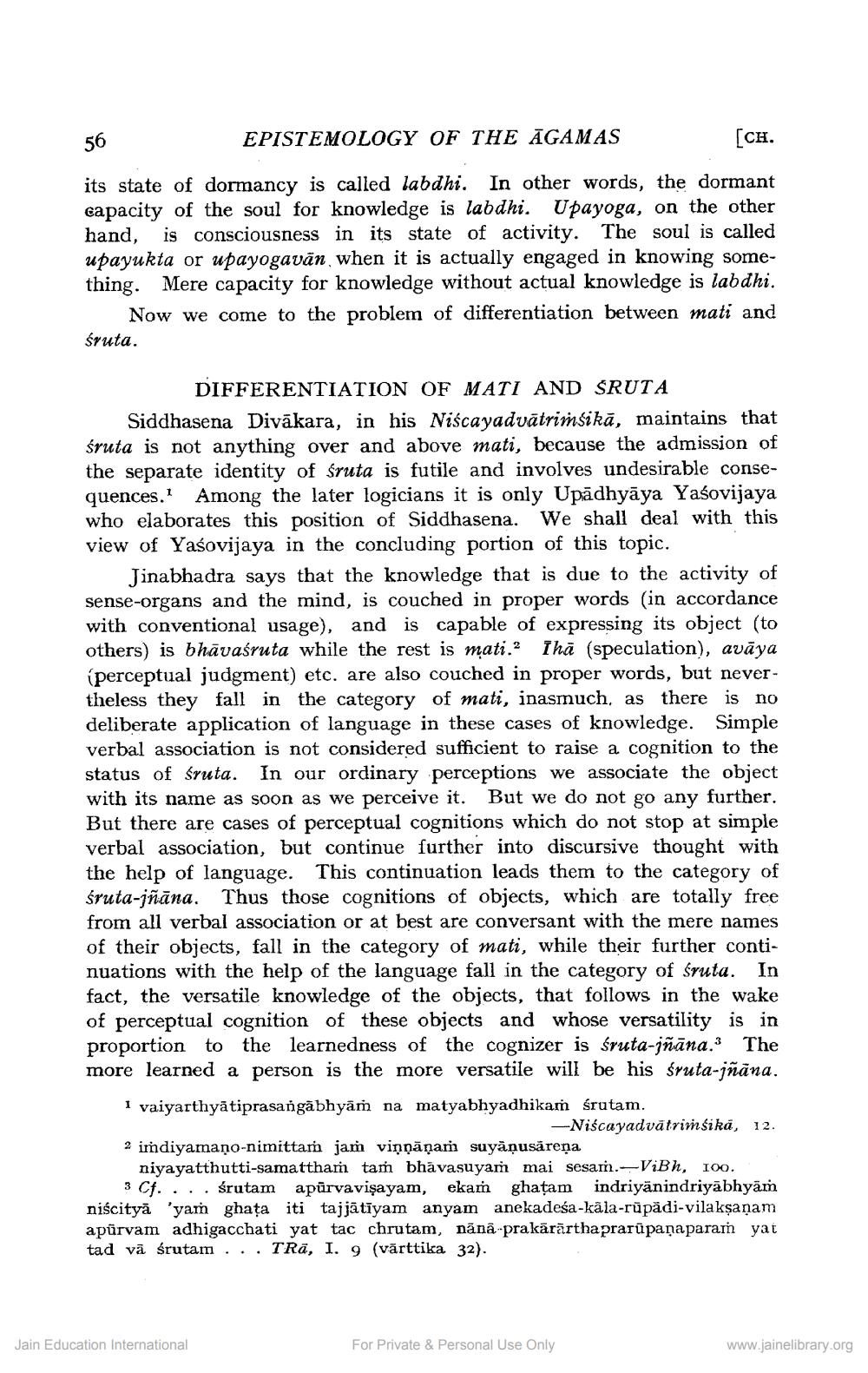________________
56
EPISTEMOLOGY OF THE AGAMAS
[CH.
its state of dormancy is called labdhi. In other words, the dormant capacity of the soul for knowledge is labdhi. Upayoga, on the other hand, is consciousness in its state of activity. The soul is called upayukta or upayogavān when it is actually engaged in knowing something. Mere capacity for knowledge without actual knowledge is labdhi.
Now we come to the problem of differentiation between mati and śruta.
DIFFERENTIATION OF MATI AND SRUTA Siddhasena Divākara, in his Niscayadvātrimśikā, maintains that śruta is not anything over and above mati, because the admission of the separate identity of śruta is futile and involves undesirable consequences.' Among the later logicians it is only Upadhyāya Yaśovijaya who elaborates this position of Siddhasena. We shall deal with this view of Yaśovijaya in the concluding portion of this topic.
Jinabhadra says that the knowledge that is due to the activity of sense-organs and the mind, is couched in proper words in accordance with conventional usage), and is capable of expressing its object (to others) is bhāvasruta while the rest is mati. Thā (speculation), avāya (perceptual judgment) etc. are also couched in proper words, but nevertheless they fall in the category of mati, inasmuch, as there is no deliberate application of language in these cases of knowledge. Simple verbal association is not considered sufficient to raise a cognition to the status of śruta. In our ordinary perceptions we associate the object with its name as soon as we perceive it. But we do not go any further. But there are cases of perceptual cognitions which do not stop at simple verbal association, but continue further into discursive thought with the help of language. This continuation leads them to the category of śruta-jñāna. Thus those cognitions of objects, which are totally free from all verbal association or at best are conversant with the mere names of their objects, fall in the category of mati, while their further continuations with the help of the language fall in the category of śruta. In fact, the versatile knowledge of the objects, that follows in the wake of perceptual cognition of these objects and whose versatil proportion to the learnedness of the cognizer is śruta-jñāna.3 The more learned a person is the more versatile will be his śruta-jñāna. 1 vaiyarthyātiprasangābhyām na matyabhyadhikam śrutam.
--Niścayadvätrimśika, 12. 2 imdiyamaņo-nimittam jam vispāņam suyāņusāreņa
niyayatthutti-samattham tam bhāvasuyam mai sesam.-ViBh, 100.
3 Cf. . . . śrutam apūrvavişayam, ekam ghatam indriyanindriyabhyam niścityā 'yam ghața iti tajjātīyam anyam anekadeśa-kāla-rüpädi-vilaksanam apūrvam adhigacchati yat tac chrutam, nāna-prakārārthaprarüpaņaparan yat tad vā śrutam... TRā, I. 9 (vārttika 32).
Jain Education International
For Private & Personal Use Only
www.jainelibrary.org




